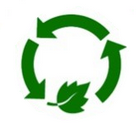PLA | Polylactic acid - Thermoplastic polymers, elastomers and additives

×
- Thermoplastics
- Organics polymers
- Acetal
- Acrylates
- Alloys
- Styrenics
- Polyolefins
- Polyethylene
- Polypropylene
- Polyesters
- Polyethers
- Polyamides
- Vinyls
- Superpolymers
- SAP
- Elastomers TPE
- TPE Generation
- Blend
- Blocks
- Foamed
- Segmented
- Compuestos
- TPE-A
- TPE-E
- TPE-O
- TPE-S
- TPE-U
- TPE-V
- Group M
- Group O
- Group Q
- Group R
- Group U
- Additives
- Compatibilizer
- Bio-additives
- Coefficient of friction
- Lubricants
- Chain modifier
- Optical
- Laboratory
- Ageing
- Electricals
- Physicals
- Mechanicals
- Optical
- Chemicals
- Thermal
- Test speciment ISO - ASTM
- Process
- Injection
- Polymerization
- Aesthetic processes
- Welding
- Vulcanizations
- Polypedia
- Properties of polymers
- Chemical properties
- Physical properties
- Optical properties
- Radiation resistant plastics
- Defects in polymers
- Catalizadores
- Applications
- Automotive
- Underbonnet
- Interiors
- Exteriors
- E&E
- Home
- Industrial
- Hydraulic cylinders
- E&E
- Shoes
- Service
- Contacts
info@mexpolimeros.com - tel. 477 7350309
info@mexpolimeros.com - Mobil y Whatsapp +52(562)3758904
Móvil y whatsapp +52(562)3758904
info@mexpolimeros.com
×
- Thermoplastics
- Organics polymers
- Acetal
- Acrylates
- Alloys
- Styrenics
- Polyolefins
- Polyethylene
- Polypropylene
- Polyesters
- Polyethers
- Polyamides
- Vinyls
- Superpolymers
- SAP
- Elastomers TPE
- TPE Generation
- Blend
- Blocks
- Foamed
- Segmented
- Compuestos
- TPE-A
- TPE-E
- TPE-O
- TPE-S
- TPE-U
- TPE-V
- Group M
- Group O
- Group Q
- Group R
- Group U
- Additives
- Compatibilizer
- Bio-additives
- Coefficient of friction
- Lubricants
- Chain modifier
- Optical
- Laboratory
- Ageing
- Electricals
- Physicals
- Mechanicals
- Optical
- Chemicals
- Thermal
- Test speciment ISO - ASTM
- Process
- Injection
- Polymerization
- Aesthetic processes
- Welding
- Vulcanizations
- Polypedia
- Properties of polymers
- Chemical properties
- Physical properties
- Optical properties
- Radiation resistant plastics
- Defects in polymers
- Catalizadores
- Applications
- Automotive
- Underbonnet
- Interiors
- Exteriors
- E&E
- Home
- Industrial
- Hydraulic cylinders
- E&E
- Shoes
- Service
- Contacts
×
- Thermoplastics
- Organics polymers
- Acetal
- Acrylates
- Alloys
- Styrenics
- Polyolefins
- Polyethylene
- Polypropylene
- Polyesters
- Polyethers
- Polyamides
- Vinyls
- Superpolymers
- SAP
- Elastomers TPE
- TPE Generation
- Blend
- Blocks
- Foamed
- Segmented
- Compuestos
- TPE-A
- TPE-E
- TPE-O
- TPE-S
- TPE-U
- TPE-V
- Group M
- Group O
- Group Q
- Group R
- Group U
- Additives
- Compatibilizer
- Bio-additives
- Coefficient of friction
- Lubricants
- Chain modifier
- Optical
- Laboratory
- Ageing
- Electricals
- Physicals
- Mechanicals
- Optical
- Chemicals
- Thermal
- Test speciment ISO - ASTM
- Process
- Injection
- Polymerization
- Aesthetic processes
- Welding
- Vulcanizations
- Polypedia
- Properties of polymers
- Chemical properties
- Physical properties
- Optical properties
- Radiation resistant plastics
- Defects in polymers
- Catalizadores
- Applications
- Automotive
- Underbonnet
- Interiors
- Exteriors
- E&E
- Home
- Industrial
- Hydraulic cylinders
- E&E
- Shoes
- Service
- Contacts

